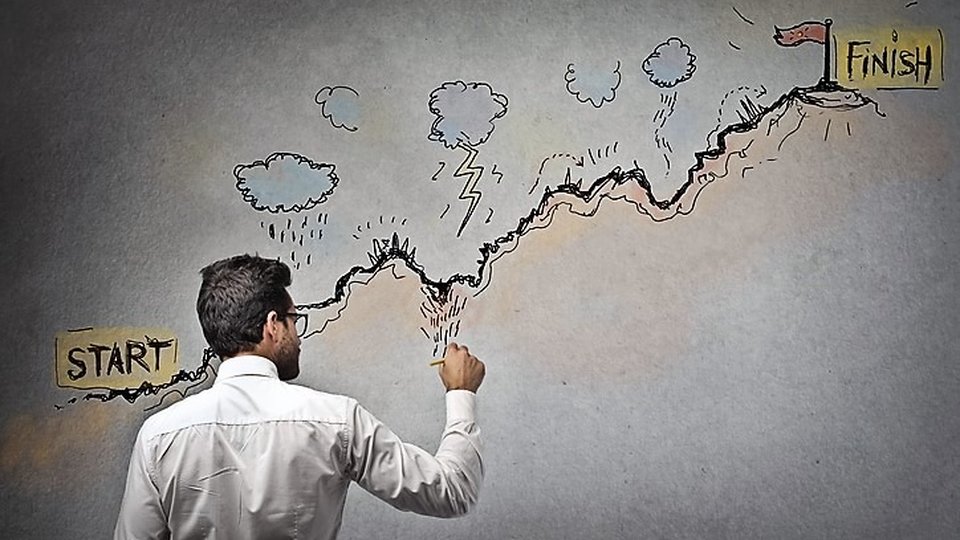Commentary
How SWOT analysis saved our business in difficult times
Through SWOT we knew in 2008 that the vending industry would be depressed for the foreseeable future, so we looked at this totally unproven, new technology — micro markets — as our savior. The rest is history.

November 1, 2021 by Ray Friedrich
One could easily argue that for many, the COVID-19 pandemic has been the most difficult time the convenience services industry has ever faced.
A strategic plan, strong leadership and a SWOT (strengths, weaknesses, opportunities and threats) analysis, as described in my last article, are required to survive the current situation.
How SWOT saved us in 2008
For many of us in the vending, corporate dining and catering business, the Great Recession of 2008 was a very challenging time as well. As the CEO of a Detroit vending/foodservice operation, I can tell you we were hit hard. In 2007, we had just completed a large acquisition and all the bank debt that went with it.
In 2008, the bottom fell out in our market. Our revenues dropped by 40% within three months. Our clients were failing and closing at an incredible rate. These clients were never coming back and neither was their revenue.
Then our good friends at the bank, always good friends when you're paying, wanted their money. Ironically, later I learned they were in more trouble than we were. Anyway, we needed a big capital infusion and faced bankruptcy directly in the face. Twenty-one years of hard work building an asset with great value could have be gone in the blink of an eye.
After meeting with a bankruptcy attorney to understand our worst case scenario, we got down to work. In order to save our company we needed to face some hard facts. The first thing we did was put together a crisis board of directors.
The board was very diverse with the smartest people we could attract from within our business, from within our industry and from outside the industry.
Through SWOT analysis we quickly understood that the customers we lost were gone forever. The vending and dining industry was not going to come back quickly and there would be a big fallout of operators and the ones left would most likely depress pricing to get what deals were left. They were desperate with warehouses full of equipment. Those were our weaknesses and threats.
How we found strengths and opportunity
So what were our strengths and opportunities? In 2006 I met Rob Simmons from Freedom Shopping at the National Automatic Merchandising Association show in Atlanta. The company was exhibiting a new concept for unattended self-checkout. It used RFID technology as a way to "read" the product at the kiosk and as a security measure with a "gate" at the door to detect theft.
This was completely unproven technology and was in many ways, as some said, "crazy!" There were several challenges to overcome, but I saw a big opportunity. Of course this would become what we know now as the micro market, now generating billions in revenues globally.
The first thing we did was purchase the equipment and set it up in an empty office at our facility. We then worked with the creators at Freedom Shopping to work out all the challenges with this startup technology. After a great deal of work we were confident enough to open a market at a local auto industry supplier.
Due to their own economic driven budget cuts, they also had a challenge feeding their employees at work with quality, fresh food you could pick up and look at which was not at all possible with a vending machine.
We brought them to our office, showed them the concept and the VP said, "Bring this over and set it up." None of us knew if it would work. Would people be able to use it? Will there be crazy theft? Would the sales give us an ROI? I think many of you know the result and the rest is history.
Developing and using an unproven, radical technology saved our vending business. We opened 20 markets before the competition knew what happened. Even those who understood what we were doing were still very skeptical. Truth be told, so were we. However, had we not been desperate to find a way out of our troubles and put the very difficult work into the development of the technology, we would have likely failed. Doing what we did also helped advance the micro market industry by several years in a short amount of time.
How we rescued manual foodservice
But we still had our foodservice division to save. I guess you could call it a bit lucky, but we had just started our foodservice operation two years earlier and had nowhere to go but up.
We reinvented what corporate dining looked like in our market. Up to this point we all ran a "cafeteria" style foodservice concept serving "cafeteria" style food. We adopted a "fresh food" approach with restaurant style offerings. We developed strong standalone brands like Abe's Delicatessen and The Chop Shop, a manned concierge salad station.
We used onsite fresh baked bread and digital menu boards. We developed an employee service culture of, "we are a restaurant not a cafeteria and we will earn your patronage every day."
Our company was distinctly different from our competition. We also combined our new self-checkout technology in our dining program for a great off-hour's option. This division had fantastic growth over the next 12 years.
Once again, strategic planning and using SWOT combined with strong leadership saved a company. Proving that planning through significant change can bring about great results. Remember today's challenges are tomorrow's opportunities.


